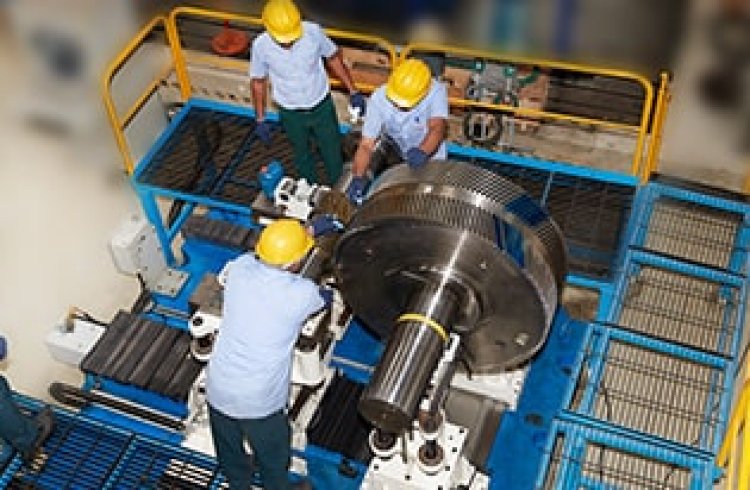Multiple Gearbox Configurations Employed in Industrial Applications
The primary function of different types of gears by the Gears Manufacturers in India is to optimize the output speed or torque
Share this Post to earn Money ( Upto ₹100 per 1000 Views )

Gearboxes are super important in industries. They help control how fast things spin and how much twisting power they have. This is crucial for machines to work well. As technology gets better, gearboxes also get updated to match what industries need. Different designs are made to suit modern manufacturing needs. When these designs work together, they make machines run smoothly in various industries. This article talks about the multiple gearbox configurations employed in industrial applications.
What is a Gearbox?
A gearbox is a mechanical device crucial in transferring power. It is also required for adjusting the speed or torque between a machine's engine along with its moving parts. It consists of interconnected gears. These gears transmit motion and power from one component to another. The primary function of different types of gears by the Gears Manufacturers in India is to optimize the output speed or torque. This function is done according to the specific requirements of a mechanical system. Gearboxes are pivotal in various applications. This ensures that the power generated by the engine is efficiently utilized. Gearboxes contribute to the smooth operation and performance optimization of a wide range of mechanical systems by allowing adjustments in rotational speed and torque.
Different Configurations of Gearboxes
Multiple Outputs
One prevalent configuration in industrial gearboxes is the incorporation of multiple outputs. This design allows a single input to be distributed across multiple shafts, providing versatility in power distribution. Industries such as manufacturing and mining often leverage this configuration to drive various components simultaneously. The ability to synchronize and control multiple outputs enhances operational efficiency, making these gearboxes indispensable in complex machinery setups.
Vertical and Horizontal Offset
Another crucial aspect in gearbox configurations for industrial applications is the consideration of vertical and horizontal offsets. In some instances, space constraints or specific design requirements necessitate the arrangement of gear shafts in non-linear configurations. Vertical offset gearboxes facilitate a compact design, enabling machinery to operate seamlessly in constrained spaces. On the other hand, horizontal offsets accommodate applications where the spatial orientation demands a linear arrangement. This flexibility in gearbox design ensures adaptability to diverse industrial environments.
Quill Shaft
The quill shaft configuration is a specialized gearbox design commonly employed in gas turbine and marine propulsion applications. This quill shaft ensures that gear tooth contact is unaffected by shift of quill axis during running on account of large thermal growth of connecting equipment and also ensures torsional compliance. Quill shaft transmission is also used for marine clutch arrangement to decouple engine from propulsion shaft during idle condition of ship.
Choosing the correct configuration for gearbox
Choosing the right type of gearbox is super important in the world of industry. Basically, it's like picking the right outfit for a specific occasion, but for machines. Engineers and designers need to think about what their machines need, like if they require different speeds or need to handle being tilted. The type of gearbox chosen can seriously affect how well machines work and how reliable they are. Many times gearbox configuration (horizontal or vertical offset) also depends on connecting machine running axis shift during load operations which has direct influence in tooth contact during operation.
Gearboxes by the Gearbox Manufacturers are more than just mechanical parts. They're like the brains of industrial machines. People are always trying to come up with new and better gearbox designs to make machines work better. It further reduces the time they spend not working. It also keeps up with the demands of modern production. Looking ahead, changes and improvements in gearbox technology will be a big deal, driving progress in how machines work in factories and other industrial settings.
Conclusion
The myriad configurations of gearboxes in industrial applications underscore their significance in powering diverse machinery. The utilization of multiple outputs enhances operational efficiency, allowing for the simultaneous control of various components. Vertical and horizontal offsets cater to spatial constraints, providing adaptability to different industrial settings. The quill shaft configuration, with its unique design, proves essential in train thermal growth mismatch situations and torsional considerations.
















